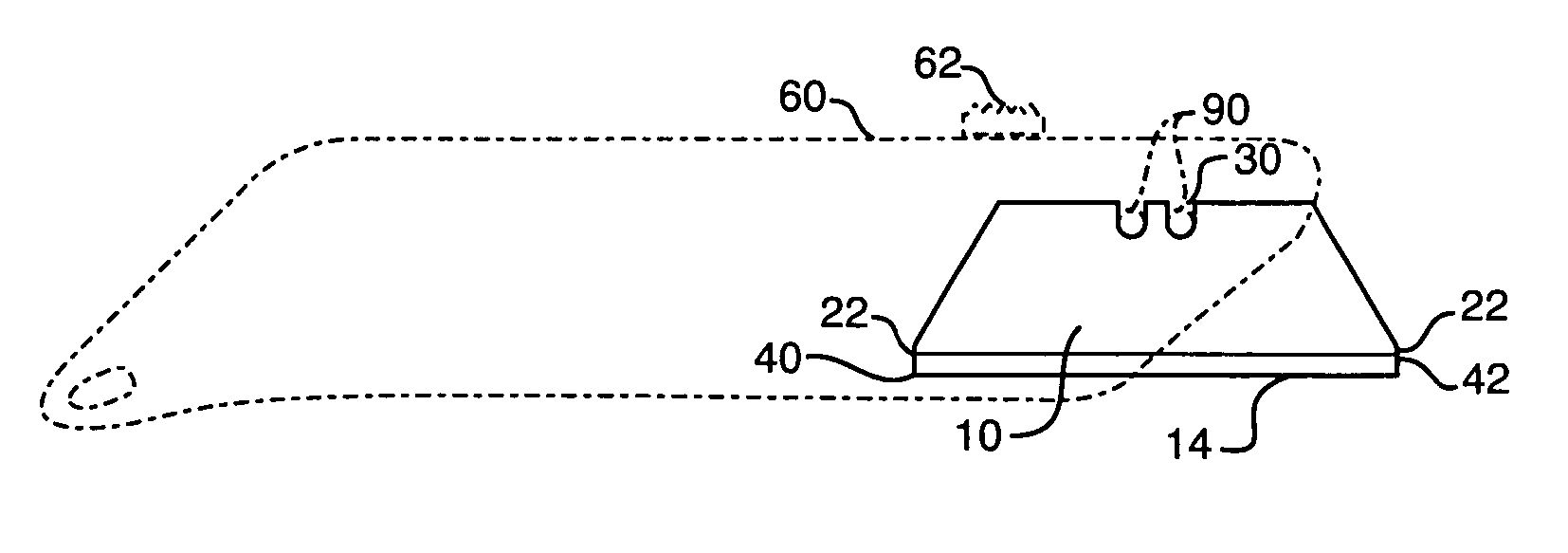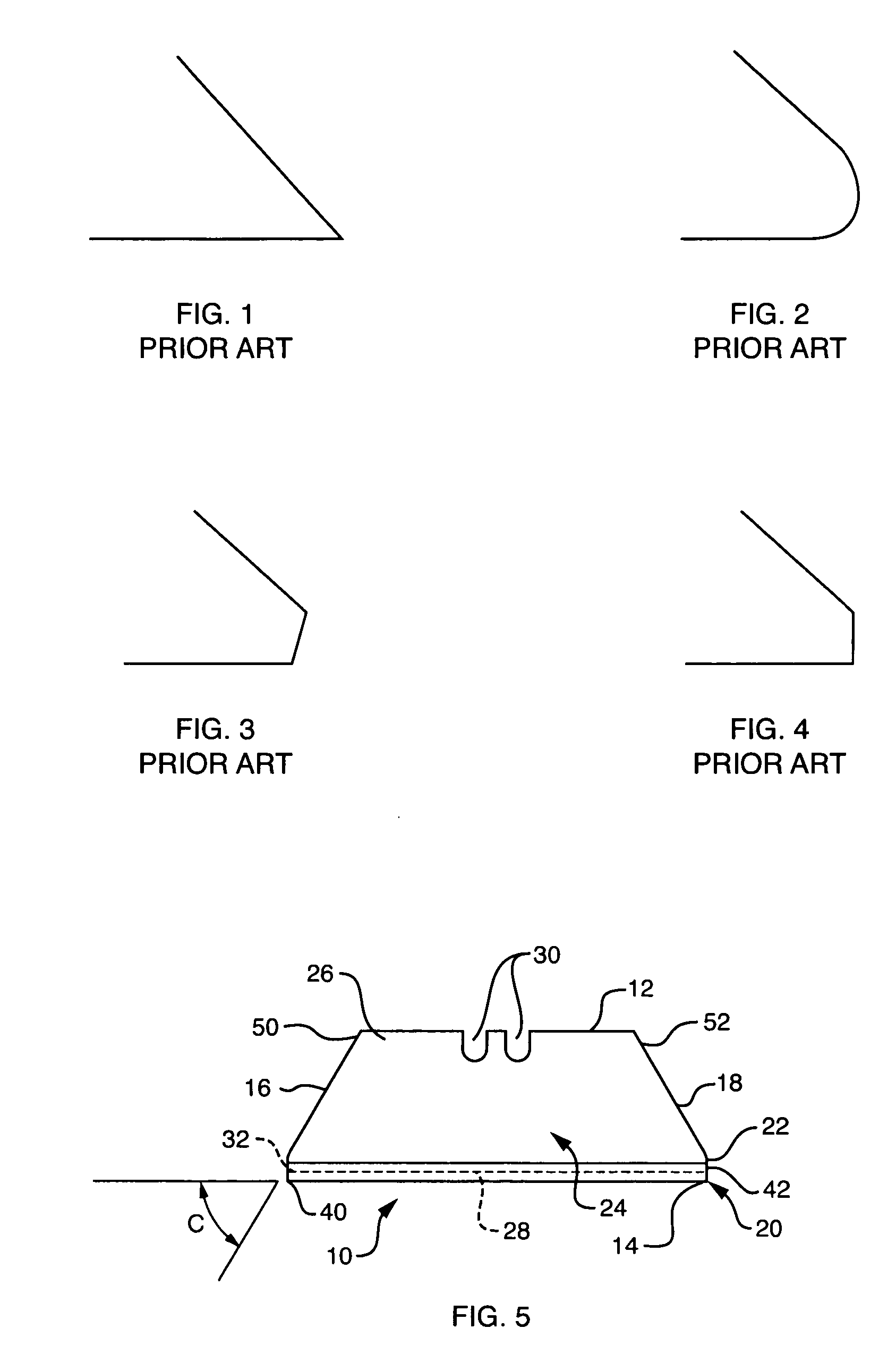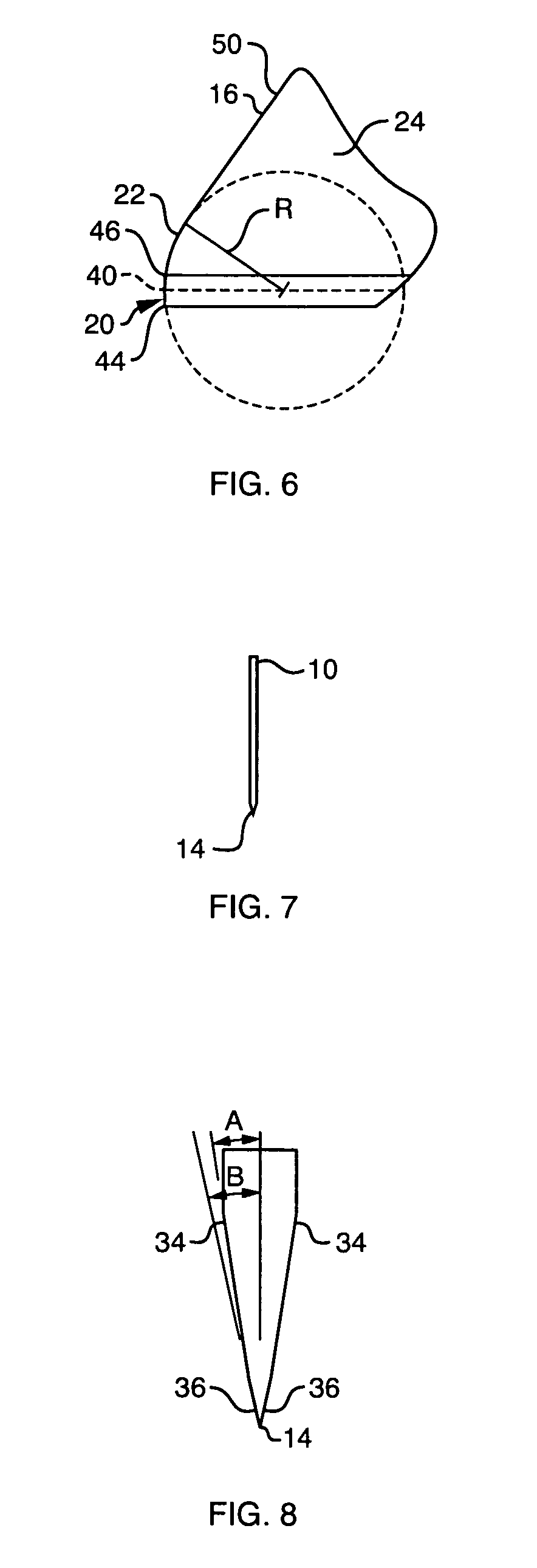Blunt tip utility blade
a utility blade and blade technology, applied in the field of utility blades, can solve the problems of user injury, user inadvertent injury, user dislike of rounded cutting corner blades, etc., and achieve the effect of facilitating piercing an obj
- Summary
- Abstract
- Description
- Claims
- Application Information
AI Technical Summary
Benefits of technology
Problems solved by technology
Method used
Image
Examples
Embodiment Construction
[0025] In FIG. 5, a blunt tip utility knife blade embodying the present invention is indicated generally by the reference numeral 10. The utility knife blade 10 defines a back edge 12, a cutting edge 14 located on an opposite side of the blade relative to the back edge, and two side edges 16, 18 located on opposite sides of the blade relative to each other and extending between the back and cutting edges of the blade. As shown typically in FIG. 5, in the currently preferred embodiment of the present invention, the back, cutting and side edges of the blade preferably define an approximately trapezoidal peripheral configuration. However, as described further below with reference to FIG. 9, for example, the utility knife blade of the present may take any of numerous different shapes or configurations that are currently known or later become known, including, for example, a square or parallelogram shape.
[0026] In the exemplary embodiment of FIG. 5, the blade 10 is a bi-metal blade defi...
PUM
 Login to View More
Login to View More Abstract
Description
Claims
Application Information
 Login to View More
Login to View More - R&D
- Intellectual Property
- Life Sciences
- Materials
- Tech Scout
- Unparalleled Data Quality
- Higher Quality Content
- 60% Fewer Hallucinations
Browse by: Latest US Patents, China's latest patents, Technical Efficacy Thesaurus, Application Domain, Technology Topic, Popular Technical Reports.
© 2025 PatSnap. All rights reserved.Legal|Privacy policy|Modern Slavery Act Transparency Statement|Sitemap|About US| Contact US: help@patsnap.com



